The fundamentals of astronomy for beginners
EXPLAINER
Master the art of averted vision
Martin Mobberley explains how to see fainter objects than you ever imagined possible
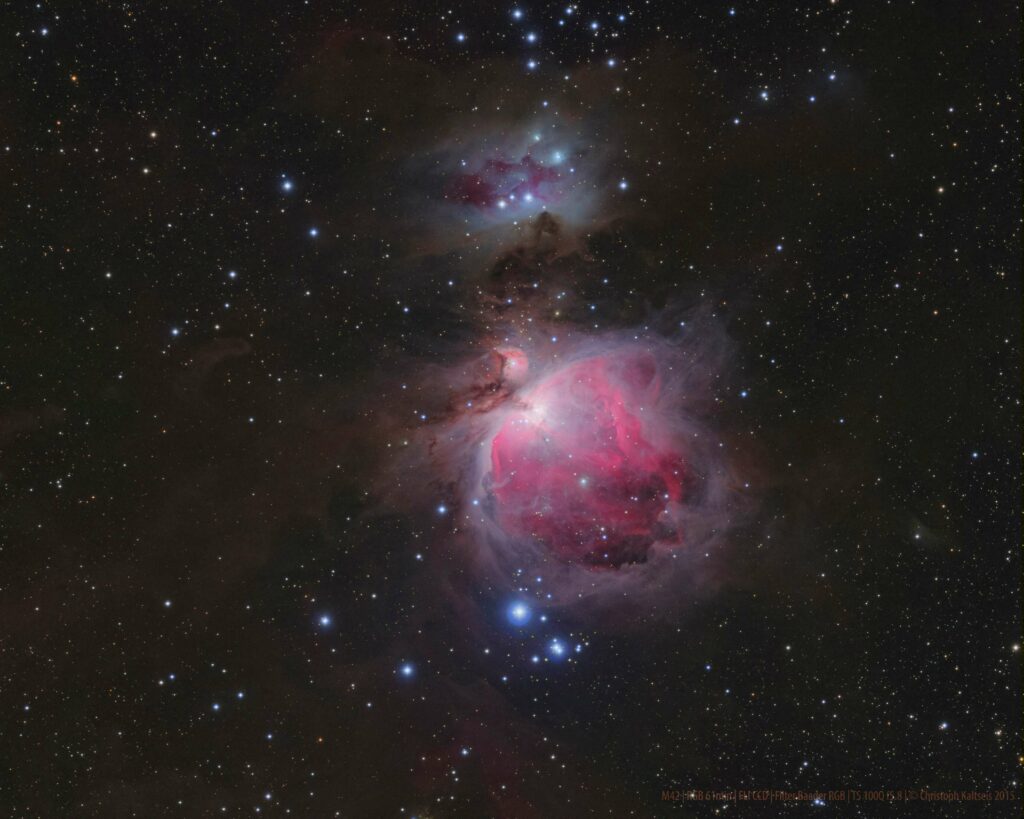
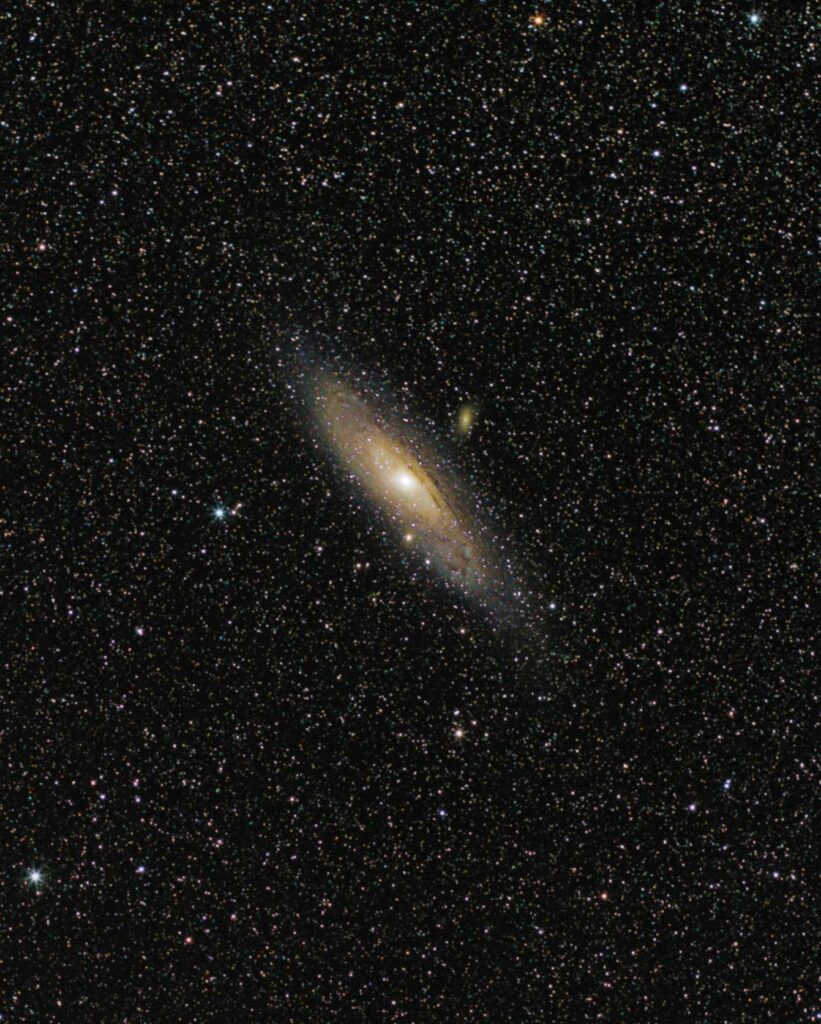
If you’re new to stargazing, a faint object like C/2022 E3 ZTF, the comet that had us all excited earlier this year, isn’t the best target for a first look through a telescope – the chances are you won’t see a thing. The eye is a remarkable detector, but to see faint objects like this it helps to understand both its limitations and the tricks you can use to coax the maximum out of its short-exposure capability (unlike a DSLR camera, long exposures aren’t an option with the eye).
Of course there are other limiting factors. Light pollution, impatience, a poor night for seeing, and not spending long enough dark-adapting your eyes can all play a part, as can using the wrong magnification and not keeping your telescope’s optics clean and wellcollimated. But by mastering ‘averted vision’, you can train your eyes to get the most out of your observing nights and use your retina to greatest effect.
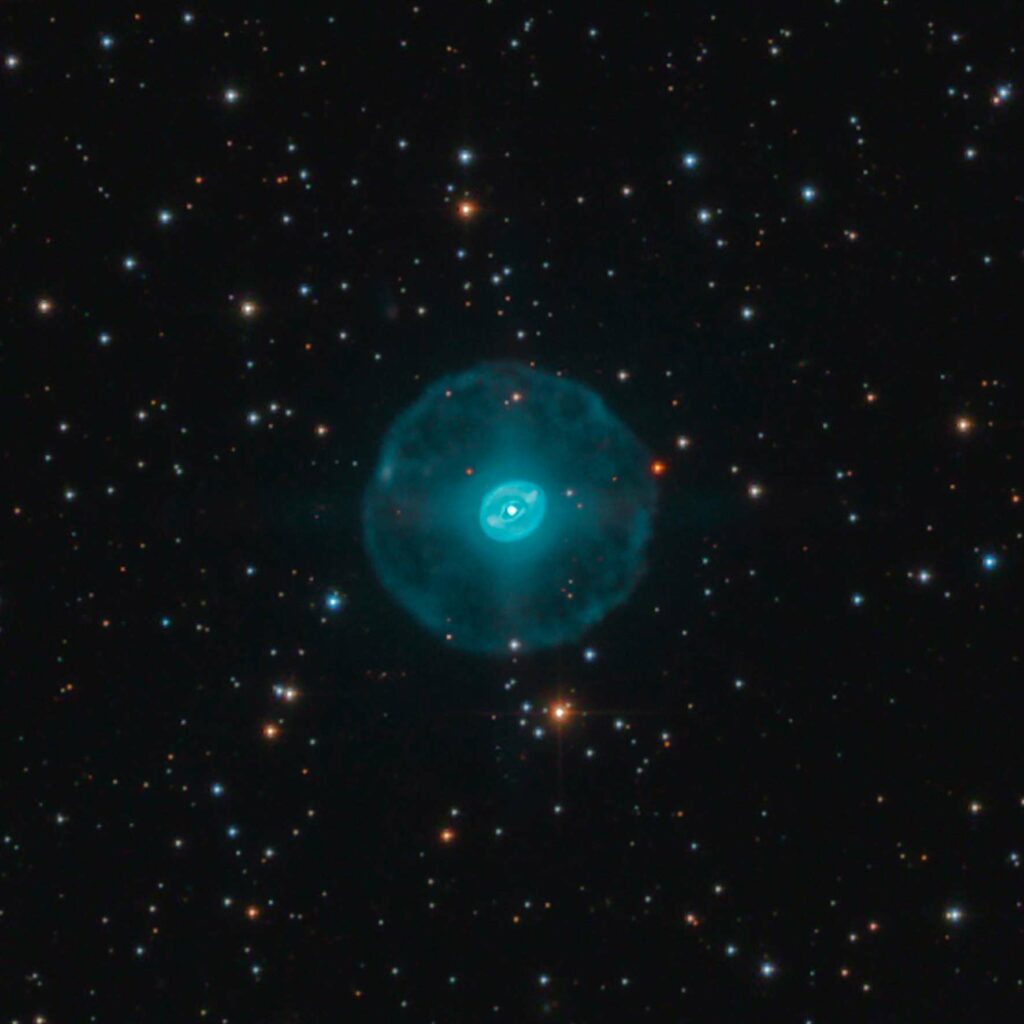
The retina is the thin layer of cells that line the back of the eyeball, where light entering from the pupil is converted into signals for the brain. The eye has two types of detector cells within the retina, called rods and cones. Rods are low-light detectors, whereas cones allow full-colour, high-resolution eyesight. The central one degree of the retina, the fovea, is packed with cones which you are using to read this sentence. Your brain creates the illusion that the whole magazine page is sharp, but in fact you are only seeing a few letters at a time at high resolution and in full colour; your eye muscles are swiftly zipping everywhere and creating the illusion.
Find your sensitive side
The electrochemical signals from the retina’s detectors travel via neurons known as ganglion cells on their way to the brain. In the high-resolution, full-colour retina centre, one ganglion cell connects to one cone. But as you go further out and low-light rods dominate, there may be 100 rod detectors passing their electrochemical signal into just one ganglion cell; it is a case of paralleling up to improve the signal-to-noise ratio.
With so many detectors bundled together, resolution suffers badly. While the foveal cones can resolve a 60th of a degree (one arcminute), the bundled rod system, well away from the centre, might only resolve 20 arcminutes; that’s not much finer than the size of the Moon seen with the naked eye.
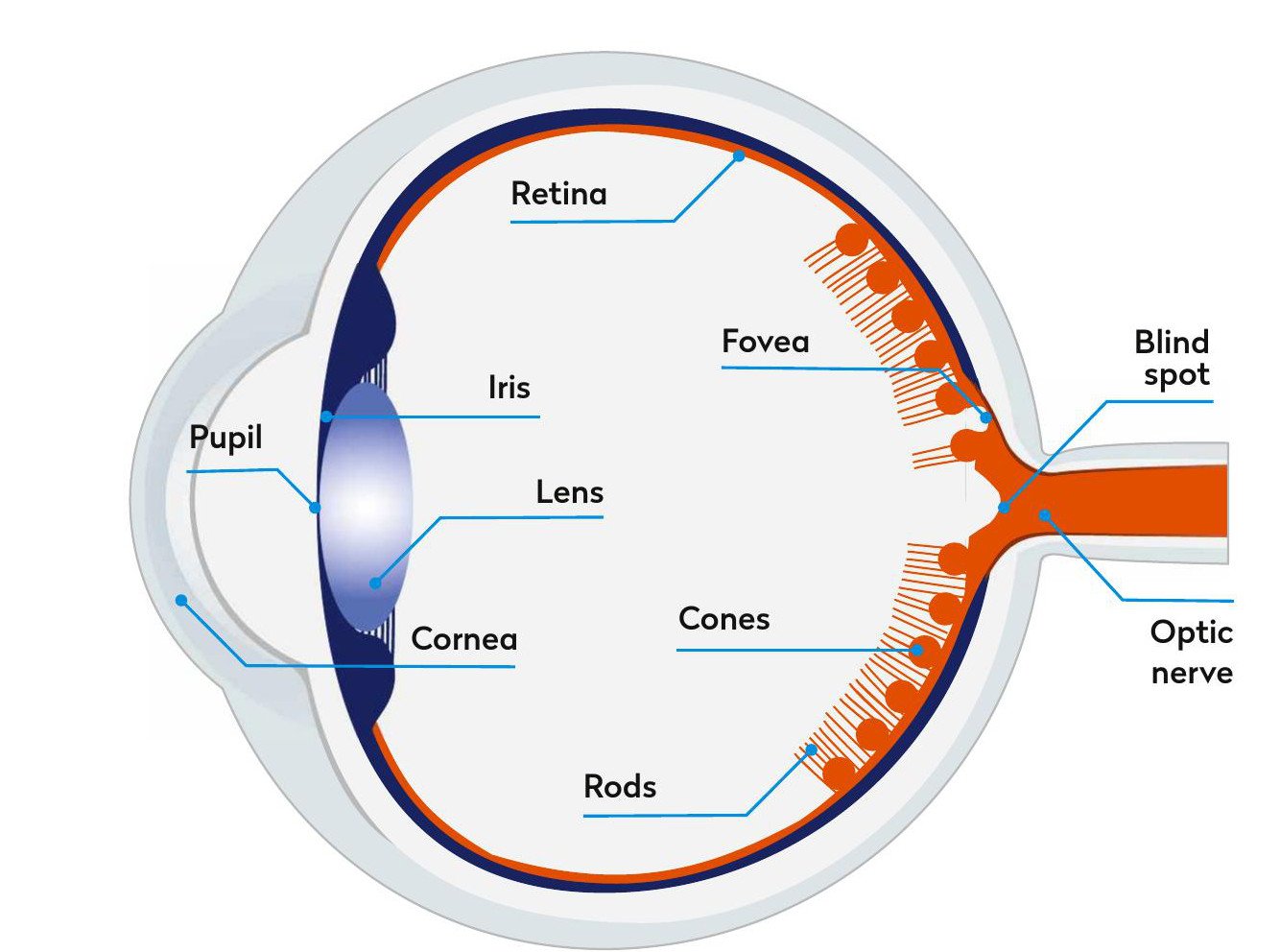
The good news is that there is an optimum, ultra-sensitive, rod-packed region of the retina that you can bring into play. Here at this crucial point, the eye is about four astronomical magnitudes (40 times) more sensitive than at its centre.
To get to this sensitive area, you have to look to one side of the faint astronomical object you’re trying to see: place the object you’re looking at roughly 8° to 16° away from the eye’s centre; 12° is a good average value for the best part. At first this will seem incredibly difficult, but it will improve with practice. This 12° offset should be arranged so that you appear to place the object nearer to your nose. The reason for this is that the eye has a blind spot where the optic nerve leaves the retina and this blind spot is on the other side, away from the nose. Physically, it isn’t – the eye’s lens turns everything upside down, but we are looking at how it feels here and not how it actually is.
Keep it dark
Of course, when you first go outside and look through the eyepiece, you probably won’t see anything. This is because your eyes aren’t dark adapted. When the human eye is plunged into darkness, two things happen. Firstly, the pupil dilates (expands) to its maximum diameter. The second thing is that the amount of the chemical rhodopsin in the retina increases dramatically, many thousand-fold. So the combined effects of rhodopsin and using averted vision amounts to over 100,000 times more sensitivity than your central vision had in a fully-illuminated room before you stepped outdoors.
Dark adaptation – that is, waiting for the rhodopsin to do its job – cannot be rushed. You need to wait 40 minutes or more to feel the full effect. So, if you are planning to observe a number of faint objects, say the Orion Nebula, the Andromeda Galaxy or even the Blinking Planetary Nebula, save the faintest ones until the very last – you won’t be disappointed.
Other ways to see faint targets
As well as averted vision, try these steps to help you observe dim targets in the night sky
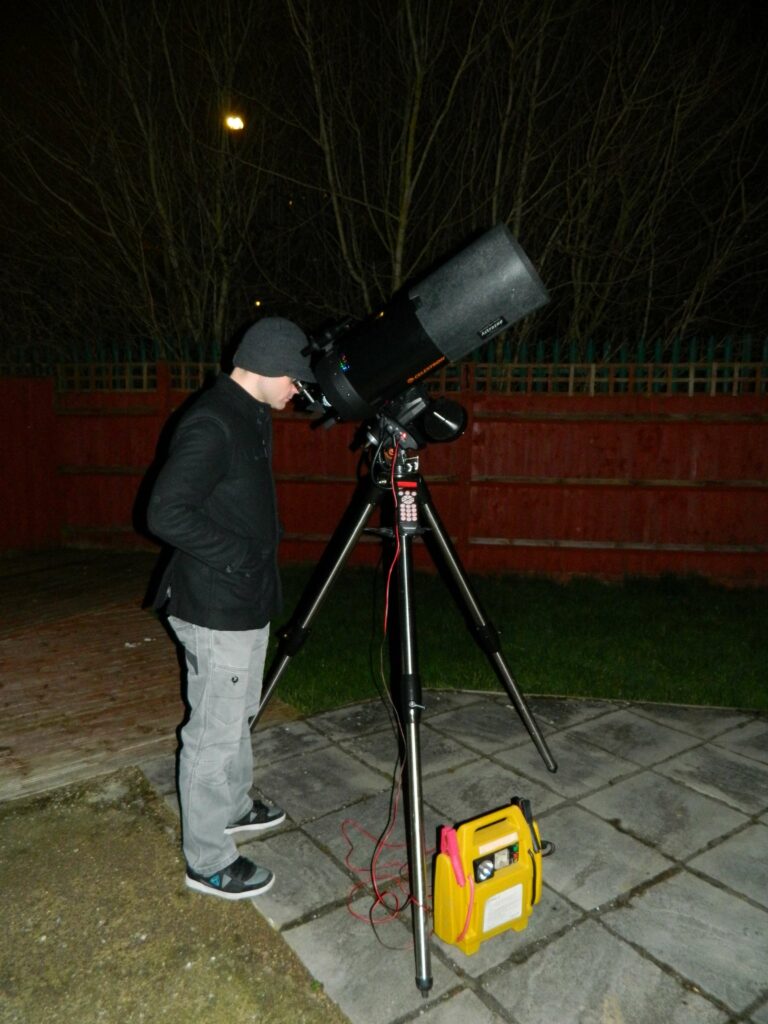
Telescope
Check your telescope is in good working order, with clean optics. If it’s a reflector, make sure that its mirrorrs are accurately collimated.
Eyepieces
High-quality eyepieces will maximise your chances of seeing faint objects. A rubber eyeguard will exclude stray light.
Weather check
The best crystal-clear nights often come when a cold front or a northerly air stream moves down the country. Check the Met Office’s weather maps for the latest forecast.
Dark site
Darker skies are better, of course, but if yours aren’t you can block out streetlights by carefully positioning your scope or using fence panels as shields.

Martin Mobberley is an author and lifelong amateur astronomer, and served as BAA president in 1997–99